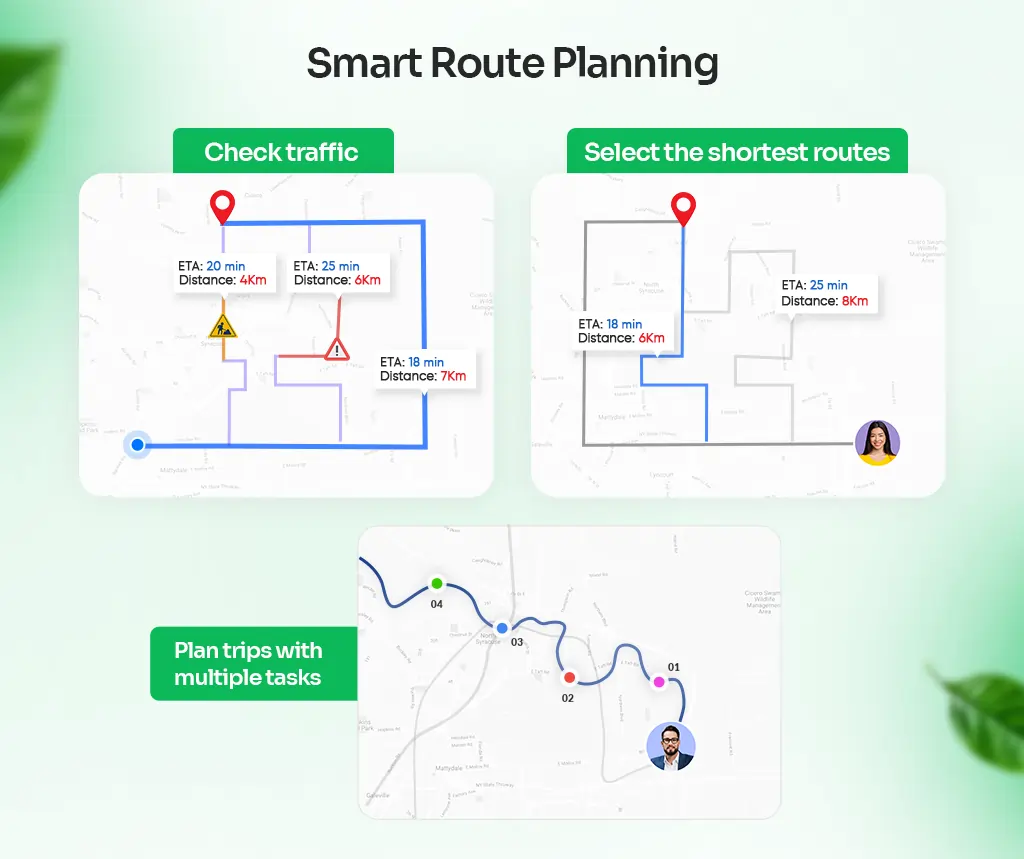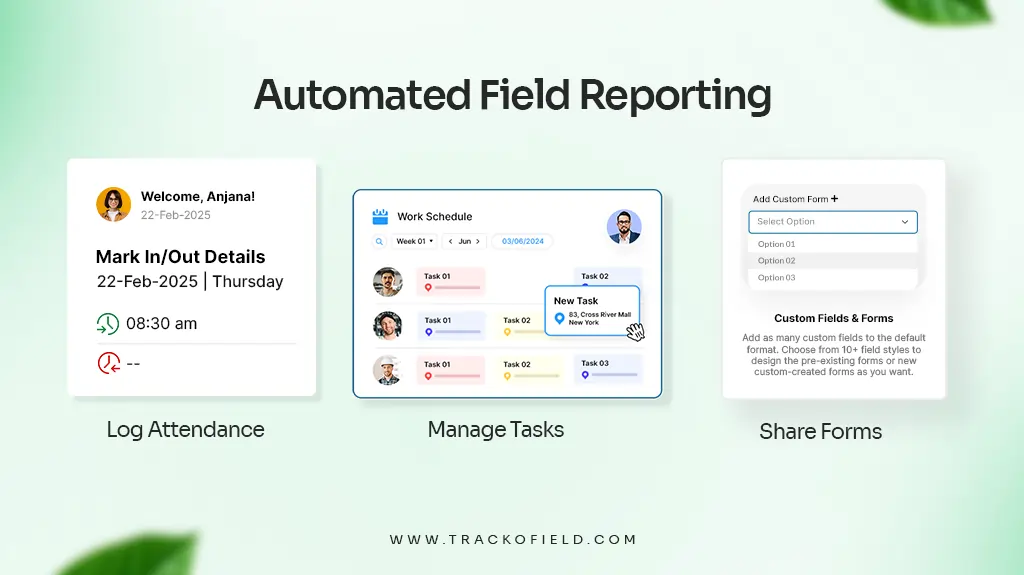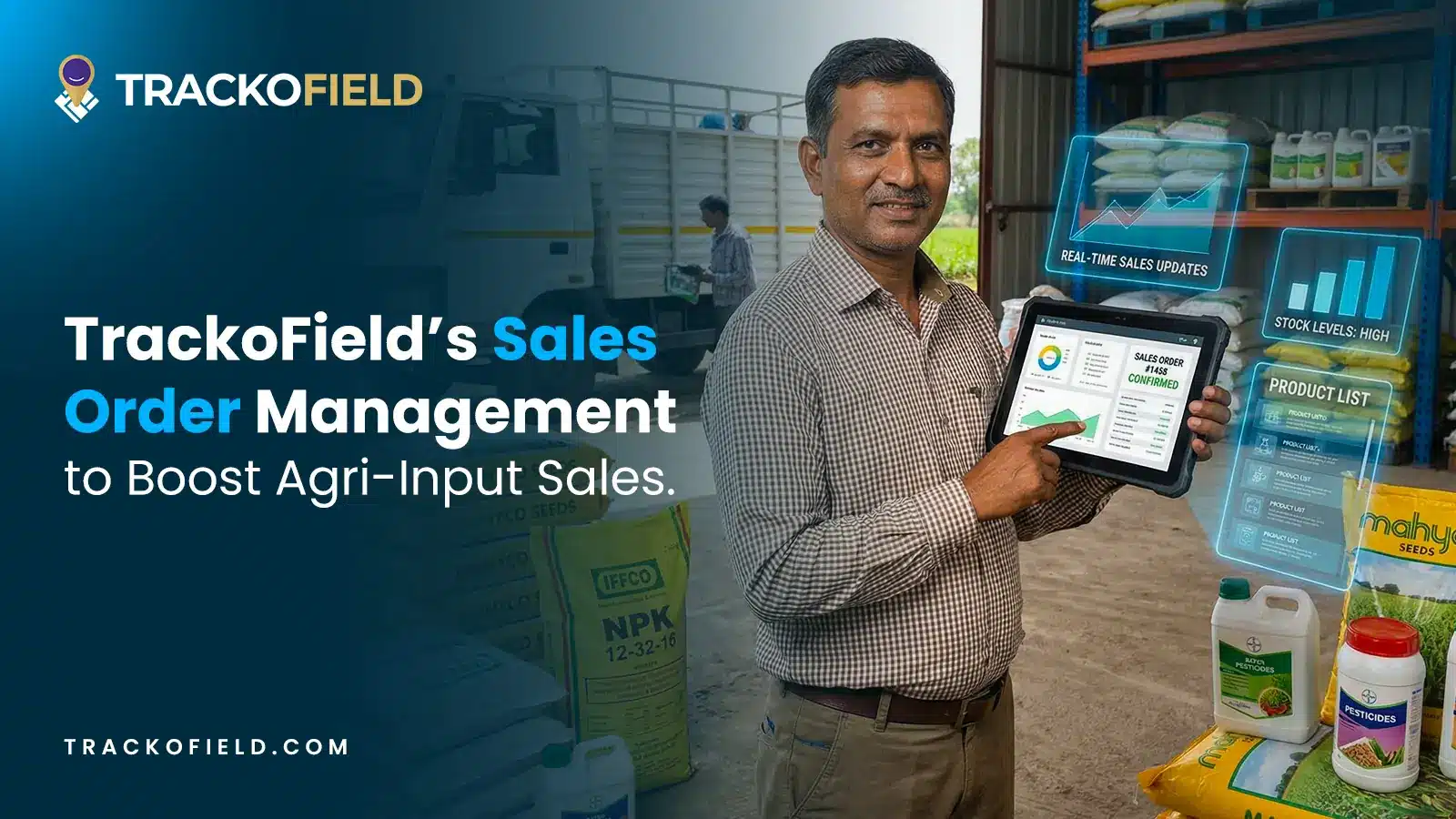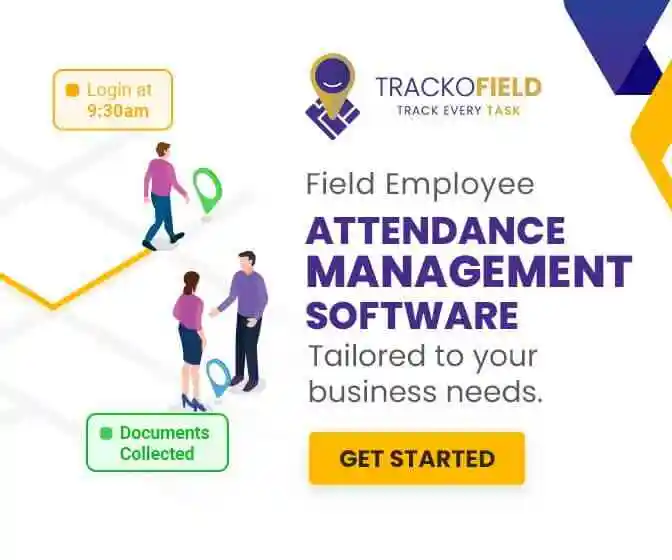-
TrackoBit
Manage commercial vehicles with the new-age Fleet Management Software
TrackoBit -
TrackoField
Streamline your scattered workforce with Field Force Management Software
TrackoField -
Features Resources
-
Blog
Carefully curated articles to update you on industrial trends. -
White Paper
Insightful papers and analysis on essential subject matters. -
Glossary
Explore an alphabetical list of relevant industry terms. -
What’s New
Get TrackoBit & TrackoField monthly updates here. -
Case Study
Explore the cases we solved with our diverse solutions. -
Comparisons
Compare platforms, features, and pricing to find your best fit.
-
About Us
Get to know TrackoBit: our team, ethos, values, and vision. -
Careers
Join the most dynamic cult of coders, creatives and changemakers. -
Tech Support
Learn about our technical support team and services in detail. -
Events
Check out the exhibitions where we left our marks and conquered. -
Contact Us
Connect with us and let us know how we can be of service.
How Agri Input Companies Are Doubling Field Coverage Without Doubling Team Size
- Author:Mudit Chhikara
- Read Time:5 min
- Published:
- Last Update: August 4, 2025
Table of Contents
Toggle
Discover how agri input companies use field force management to increase field coverage without hiring more manpower.
Table of Contents
ToggleThe agri-input industry grows by bringing more territories under their coverage. This usually requires hiring more field agents.
But modern agri-input companies are breaking the rules and proving that putting more boots on the ground isn’t the only path to growth. What’s the alternative?
Well, boosting existing workforce efficiency and using one-stop field force management solutions are two strategies agri-input businesses prefer to increase field coverage without hiring aggressively.
Want to know more such strategies?
Dive in!
How Agri Input Companies Are Doubling Field Coverage Without Doubling Team Size – 6 Strategies
Here are 6 smart strategies agri input businesses swear by to increase field coverage without expanding their workforce.
1. Smart Task Allocation
One of the easiest and most effective way to increase your field agents’ efficiency is to ensure there are no task overlaps or repeat allocations. By optimising your agri teams’ tasks, you can reduce their workload and boost performance.
Thus, smart allocation using field force management helps you utilise your workforce to its full potential. You can boost expansion without hiring more employees.
- Assign tasks based on an executive’s skillset, workload or regional familiarity.
- Allocate tasks in bulk to save time.
- Schedule tasks in advance.
- Thoroughly explain tasks using voice notes, descriptions and videos to reduce chances of failure.
- Define task types (Demos, Troubleshooting, Sales)
Additionally, agri-input businesses should also prefer to utilise agents who are skilled in multiple roles. This will allow for multiple tasks being completed at the same time instead of requiring several employees.
It saves time of staff and customers, requires less planning and better resource allocation.
2. Efficient Route Planning
Agri field agents have to cover considerable distances daily. Plus, they visit distant and inaccessible locations. Thus, a large chunk of their workhours is spent travelling, which is not productive.
But you can change that with better route planning. We have already covered how smart location-based task allocation can reduce travel time. You can further reduce it by overseeing and optimising your agri agents’ routes.
You can use a field force tracking tool with an integrated map. It allows field managers to:
- Check for traffic and poor road conditions.
- Identify the fastest travel routes for agri sales reps.
- Inform agents in real-time of the road conditions.
- Prioritise routes with multiple client locations.
Thus, route optimisation reduces commute fatigue and increases the number of farmer interactions per day.

Smart Route Planning
3. Optimised Territory Management
Not all regions require the same level of efforts or resource allocation. Farmers’ need for agri inputs can vary as per seasonal growing patterns, climate, land size, etc.
So, instead of choosing territories just for the sake of expanding, agri-input businesses should consider the following factors.
- Farmer density
- Type of crops grown in the area
- Seasonal growing patterns
- Local traditions
- Climate and soil type
Only after thorough analysis of the above factors and your existing workforce capability should you choose to expand your territory coverage.
💡 Let’s understand territory management with an example.
- Sugarcane takes over a year to grow and requires consistent labour and attention.
- Paddy has a short growing cycle, but the labour demand peaks at certain stages.
Therefore, targeting rice growing regions can be beneficial. Why? Well because it is a staple, high-demand crop and can be grown multiple times a year. It allows for broader reach, faster sales cycles, and easier resource allocation.
ROI can be tracked faster, and more farmers can be served collectively as many regions focus solely on growing rice instead of alternating with other crops.
4. Automated Reporting
Do you really want your field reps to use manual paper cards to punch attendance or collect survey data on paper forms?
Manual reporting is challenging and slow. The time and effort put in it by agri agents can be instead used to visit more farmers. How? Well, field force automation software is the answer!
Using field force automation, you can:
- Allow field reps to share custom forms with farmers who input their own data.
- Ensure accurate and auto-logged, geofenced attendance marking.
- Automate visit logging, time tracking and route distance calculation.
With agri reps spending more time in the field and less time in spreadsheets, they are bound to work more productivity and visit more farmers.

Automated Reporting For Agri Field Reps
5. Use One-Stop Software to Manage Agents’ Field Operations
Why rely on using multiple platforms to manage your field operations when you can just use one?
That way your field agents won’t have to spend more time and efforts logging into and operating several apps. They can use a single, lightweight field executive app to:
- Mark geo-verified attendance
- Take multiple sales orders with custom discounts
- Mark tasks as complete or in progress
- Raise reimbursement or leave requests
- Calculate daily distance travelled
So, save your agri agents’ time by choosing an all-in-one software for field reporting, communication, customer management, payroll, and more.
6. Measure Impact & Analyse Data
One of the best ways to enhance your reach is by regularly analysing your agri teams’ performance data. It allows you to spot skill gaps and patterns of underperformance early.
You can also identify trends, better understand market demands and optimise your strategies after reviewing what’s working and what’s not. Here are the key agri input KPIs you should be tracking:
- Villages covered per week/month
- Farmer meetings per day
- Demo plots executed per agent
- Retail visits and order conversion
- Idle time vs productive hours
- Missed vs completed tasks
Wrapping Up
Scaling field coverage doesn’t always mean hiring more agents. For agri-input companies, the smarter path to growth lies in optimising what you already have.
With smart task allocation, efficient route optimisation, territory mapping, and powerful field force automation tools, your existing teams can do more in less time. The best thing? It’s possible to do without sustaining employee burnouts or blowing out your budget.
So, if you want to grow your agri input operations coverage, begin by empowering your field teams today. Schedule a free demo of TrackoField.
FAQs
-
How can agri input companies double their rural outreach without increasing headcount?
Agri input companies can increase their rural outreach without hiring more staff by: - Equipping existing agents with route optimization tools - Using activity planning dashboards - Using digital reporting systems to log field operations This allows reps to visit more villages daily without spending more time or resources.
-
Is it possible to manage rural field agents remotely with TrackoField?
Absolutely. You can manage rural agri field agents remotely by : - Using real-time activity and location monitoring - Offline task tracking - Using centralised dashboards - Ensuring agents have GPS-enabled mobile devices
-
What are the best tools to track agri field agents?
Tools like TrackoField, Leadsquared, and SalesDiary offer mobile-first tracking, attendance, route planning, and daily reporting features useful for agri sales teams.
-
Can field agents cover more ground without compromising visit quality?
Yes. With well-defined daily plans, geo-tagged visit tracking, and digital demo kits, agents can maintain both efficiency and quality in each farmer interaction.
-
How can companies reduce fake visit reports from field agents?
Using time-stamped, geo-tagged photo uploads and GPS-tracked attendance ensures that visit reports are authentic and verifiable. Farmer feedback and data collection also help authenticate the agents’ visit.
Mudit is a seasoned content specialist working for TrackoField. He is an expert in crafting technical, high-impact content for Field force manage... Read More
Related Blogs
-

Unified Field Workforce Dashboard: Monitor Tasks, Attendance & More In One Place
Mudit Chhikara December 15, 2025Bring full clarity to field operations with a single, real-time field workforce dashboard.
-

Loan Disbursement in NBFCs: From 15 Days to 3 Minutes – Learn How
Shemanti Ghosh December 11, 2025TrackoField’s AI-enabled field force automation software speeds up loan disbursals in NBFC with field agent task monitoring and facial attendance…
-

AI Facial Recognition Attendance: A Game-Changer for Fraud-Free Field Operations
Mudit Chhikara December 9, 2025Ensure transparent attendance and eliminate fraud before it even starts with AI facial recognition and geofencing.
-

Boost Agri-Input Sales Efficiency with TrackoField’s Sales Order Management Module
Shemanti Ghosh December 3, 2025Grow Agri-input sales and expand farmer database with TrackoField’s Sales Order Management module.

Subscribe for weekly strategies to boost field team productivity.
Your inbox awaits a welcome email. Stay tuned for the latest blog updates & expert insights.
"While you're here, dive into some more reads or grab quick bites from our social platforms!"Stay Updated on tech, telematics and mobility. Don't miss out on the latest in the industry.
We use cookies to enhance and personalize your browsing experience. By continuing to use our website, you agree to our Privacy Policy.


































